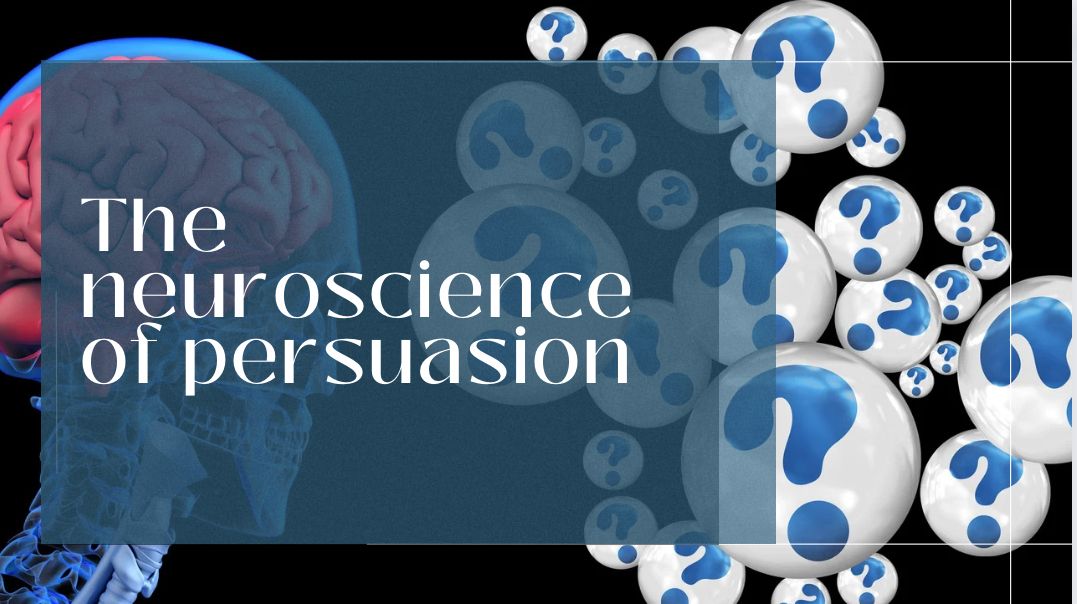
Negotiation remains an irreplaceable soft skill in the world of business. Relevant in sealing deals, resolving conflict, or persuading clients. The potential to negotiate effectively, markedly impacts an individual’s success within an organisation.
Negotiation has often been studied from a psychological perspective. Advances in neuroscience have unearthed numerous neurological principles related to persuasion.
Understanding the brain and its relation to decision-making, empowers professionals to negotiate more effectively. The world of neuroscience is an interesting space. Exploring the concept of persuasion in business, from such a perspective unearths avenues that aid with successful negotiations.
The Brain’s Decision Making Process
To understand the working of persuasion on a neurological level, the brain’s decision-making process becomes crucial.
When engaging in negotiation, we’re essentially aiming to influence an external person’s decisions. Their decisions are influenced by the functioning of neural pathways.
The Role of the Prefrontal Cortex
The prefrontal cortex is referred to as the brain’s “executive centre,” and it has a pivotal role in decision-making.
This region is responsible for evaluating options, weighing risks and rewards, and making judgments. During negotiations, both parties engage their prefrontal cortex as they assess the proposed terms, alternatives, and potential outcomes.
Emotion and Decision-Making
Contrary to the traditional view that decisions are solely rational, emotions are deeply intertwined with our choices. The limbic system, a group of brain structures responsible for processing emotions, has a significant influence on decision-making. Emotions such as trust, fear, and empathy can greatly impact negotiation outcomes.
Building Trust through the Brain’s Mirror Neurons
One of the key elements in negotiation is building trust. Trust is the foundation upon which successful negotiations are built. Recent neuroscientific research has highlighted the role of mirror neurons in fostering trust.
Mirror neurons are specialised cells in the brain that fire both when we perform an action and when we observe someone else perform that same action. They create a neural connection between individuals, allowing us to understand and empathise with the experiences and emotions of others. In negotiations, mirroring behaviors, such as mimicking body language or using similar language, can activate mirror neurons and foster a sense of connection and trust.
Practical Application:
- During negotiations, pay attention to the body language and verbal cues of your counterpart.
- Subtly mirror their gestures and expressions to establish rapport.
- Use language that resonates with their communication style to create a sense of familiarity and trust.
Cognitive Biases and Persuasion
Understanding cognitive biases is essential for effective negotiation. Cognitive biases are systematic patterns of deviation from norm or rationality in judgment, often causing perceptual distortion and inaccurate judgment.
Confirmation Bias
One of the most prevalent cognitive biases is confirmation bias, which leads individuals to seek and interpret information in a way that confirms their preexisting beliefs. In negotiations, this bias can hinder open-mindedness and limit the exploration of mutually beneficial solutions.
Anchoring Bias
Anchoring bias occurs when people rely too heavily on the first piece of information encountered (the “anchor”) when making decisions. Skilled negotiators can use this bias to their advantage by strategically introducing initial offers or terms that set a favorable anchor for the negotiation.
Practical Application
- Recognise and mitigate your own cognitive biases by remaining open to new information and alternative perspectives.
- Be mindful of the cognitive biases that may affect your counterpart’s decision-making.
- Use anchoring techniques strategically to set favorable starting points for negotiations.
The Neurochemistry of Persuasion
The brain’s neurochemistry plays a significant role in persuasion. Neurotransmitters such as dopamine, oxytocin, and serotonin can influence decision-making and social interactions.
Dopamine and Reward
Dopamine is often referred to as the “feel-good” neurotransmitter. It is released when individuals anticipate a reward or positive outcome. Skilled negotiators can tap into the brain’s dopamine system by highlighting the potential benefits of their proposals.
Oxytocin and Trust
Oxytocin, often called the “bonding hormone,” is released during social interactions and fosters trust and cooperation. Acts of generosity and acts that strengthen social bonds can trigger oxytocin release. In negotiations, building trust and rapport can lead to increased oxytocin levels, making the negotiation process smoother.
Practical Application:
- Craft your negotiation proposals to emphasise potential rewards and positive outcomes for both parties.
- Foster trust and rapport by engaging in open and collaborative dialogue.
- Demonstrate generosity and goodwill to trigger oxytocin release in both you and your counterpart.
The Influence of Storytelling on the Brain
Storytelling is a powerful persuasion tool, and its effectiveness can be attributed to how the brain processes narratives.
Narrative Transportation
Narrative transportation is the phenomenon where individuals become engrossed in a story to the point where they mentally and emotionally immerse themselves in the narrative. When negotiating, storytelling can transport your counterpart into a scenario where your proposal aligns with their goals and needs, increasing the likelihood of agreement.
Practical Application:
Incorporate compelling stories that illustrate the benefits and outcomes of your proposal.
Craft narratives that resonate with the values and aspirations of your counterpart.
In the modern business landscape, negotiation is not merely an art or a skill; it is a science. By understanding the neurological principles behind persuasion, professionals can enhance their negotiation abilities and achieve more favorable outcomes. From building trust through mirror neurons to leveraging cognitive biases and neurochemistry, the neuroscience of persuasion provides valuable insights for those seeking to excel in the world of business negotiation. As we continue to uncover the intricacies of the brain’s decision-making processes, the opportunities for applying neuroscience to negotiation will only expand, creating a new frontier for business success.










